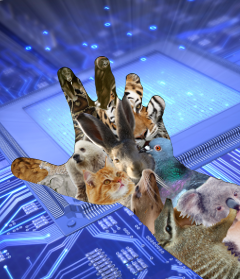Handy hints in next-gen tips for new treatments
 A new set of guidelines is aimed at preparing healthcare workers for the next generation of diagnostic treatments.
A new set of guidelines is aimed at preparing healthcare workers for the next generation of diagnostic treatments.
Faster than most people predicted, genome-based technology for demystifying undiagnosed illnesses is moving from research laboratories into general medical practice.
Now, two scientists have sketched-out what doctors may need to know in order to use the new approaches effectively.
“The technologies that were used for the Human Genome Project are now distilled down to practical tools that clinicians can use to diagnose and, hopefully, treat diseases in patients that they couldn't treat before,” said Dr Leslie Biesecker, from the US National Human Genome Research Institute.
“It's come much faster and developed more quickly and become more useful clinically than I think any reasonable person would have suggested just 10 years ago.
“At that time, I don't think anybody would have taken you seriously if you had said that in 2014, tens of thousands of patients would be getting clinical genome and exome sequencing.”
Exome sequencing is essentially an abridged version of the more complete, but more costly, genome sequencing.
Instead of targeting 3 billion base pairs of a human's genome, exome sequencing focuses on the DNA segments, known as exons, which code for proteins. These make up 1 to 2 per cent of the human genome and account for about 20,000 genes.
Once a patient's DNA is extracted and the exons sequenced, computer programs identify differences between the patient's DNA and a reference sequence for the human genome. These variants may point to the cause of the patient's disease.
The authors of the article outlining big questions for the new technology say there are a numer of points that need clearing-up.
- While these technologies are sometimes referred to as whole-genome or whole-exome sequencing, they do not cover 100 percent of the genome or exome. Because of the way the target DNA sequences are gathered and assembled, not all of the DNA can be sequenced and the technique is best at detecting single-nucleotide variants, or alterations in sequences of no more than 8-10 base pairs. It may not pick up longer variations or repetitions of sequences, or long deletions that are responsible for some genetic disorders.
- Patients for whom the technology is most promising are those with rare disorders that seem to be the result of variants in a single gene. Physicians should explore family history—the presence and pattern of similar disorders among relatives—and should carry out an extensive literature search before ordering exome sequencing. Informed consent is essential.
- Exome sequencing may not provide a diagnosis. On average, about 25 percent of such tests identify a gene variant that causes disease; most come up empty. Because of the technology's gaps, however, a negative result doesn't necessarily rule out a genetic cause for the disease.
- Most of the time, identifying a genetic cause won't lead to a cure. Even in these cases, exome sequencing may still be useful because it can end an expensive, potentially invasive and stressful, diagnostic odyssey.
- Analysis of the results may produce incidental findings—discovery of a gene variant that is unrelated to the patient's primary disorder but that could cause disease and require medical surveillance or treatment for a separate condition.
- Counselling patients and their families about what to expect is essential, but challenging because the patient may be disappointed with an inconclusive outcome of such an extensive and expensive test.
More suggestions and predictions for the exciting new age of medicine are in an article published by the New England Journal of Medicine (NEJM).







 Print
Print